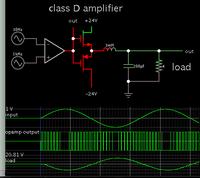Enzy
Advanced Member level 1

- Joined
- Mar 20, 2016
- Messages
- 488
- Helped
- 2
- Reputation
- 4
- Reaction score
- 2
- Trophy points
- 18
- Activity points
- 4,607
Re: [moved] Query about VU meters (led bargraph)
The amplifier I bought recently for my build I dont think its as poweful as the specs say it is I want to build a class D amplifier on my own, something with some Mosfets.
- - - Updated - - -
I am aware of the speaker set up, as I have done a couple of them over the years but building the amplifier is the part I want to learn.
The amplifier I bought recently for my build I dont think its as poweful as the specs say it is I want to build a class D amplifier on my own, something with some Mosfets.
- - - Updated - - -
I am aware of the speaker set up, as I have done a couple of them over the years but building the amplifier is the part I want to learn.






